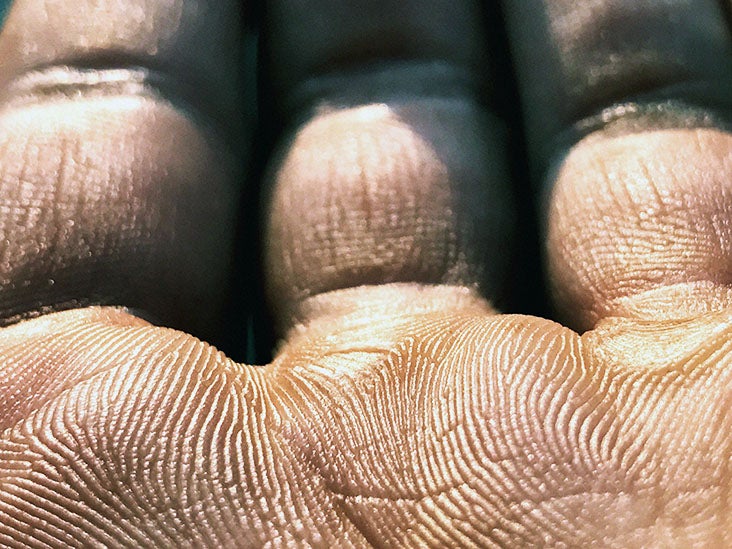Psoriasis: A brief history plus what we know now - Medical News Today

As with other medical conditions, the understanding of psoriasis has changed over time. Psoriasis likely affected the earliest humans, but it was not until the 1800s that doctors recognized psoriasis as its own condition.
Through the ages, psoriasis has gone from being a feared condition to one that people can treat to control most, if not all, of their symptoms effectively.
Ancient Greece and Rome
Several philosophers — both well-known and less prominent — from ancient civilizations described psoriasis-like lesions on the skin.
In Ancient Greece, Hippocrates (460–377 B.C.E.) described inflammatory skin conditions, including psoriasis, using two words: "psora," meaning itch, and "lopoi," describing dry, scaly skin.
Centuries later, in the Roman Empire, a nobleman named Cornelius Celsus (25 B.C.E.–50 C.E.) described a skin condition that affects the skin and nails.
The Middle Ages
Starting in ancient times and persisting through the Middle Ages, people did not write much about skin conditions. When they did, they tended to lump them together.
The grouping of skin conditions did not end for several centuries. During the Middle Ages, people living with psoriasis shared the same "treatment" — essentially being cast out from society — as people living with leprosy.
The Renaissance
During the Renaissance, an Italian named Girolamo Mercuriale (1530–1606) wrote a book called De Morbis Cutaneis (Diseases of the Skin). This book, which became one of the more important works on skin diseases, described psoriasis as a skin condition called "lepra grecorum."
The 1800s: When psoriasis got its name
In 1809, an English doctor named Robert Willan (1757–1812) produced a simple diagnostic description of several skin conditions, including psoriasis. He also defined some psoriasis types, including guttate, scalp, and palmar psoriasis. However, in his description, he used the term lepra vulgaris.
Many consider Willan to be the founder of dermatology as a medical practice.
Doctors continued to group leprosy and psoriasis until the 1800s, when an Austrian physician named Ferdinand Ritter von Hebra (1816–1880) wrote the book Atlas der Hautkrankeiten (Atlas of Skin Diseases). Unlike many before him, von Hebra separated leprosy from psoriasis in his works.
Many look to von Hebra as the father of modern dermatology and still see his book as one of the most influential books on skin diseases of all time.
Then, in 1860, Ernest Bazin connected psoriasis to a form of arthritis, calling it "arthritic psoriasis."
Also in the 1800s, Dr. Heinrich Köbner noted that psoriasis plaques appear in uncommon areas due to skin abrasion, burns, bruises, and other injuries. This is now known as the Köbner phenomenon, but scientists still do not understand why it occurs.
Throughout the rest of the 1800s into the 1900s, doctors continued to describe and refine what they knew about psoriasis.
20th century through today: Modern understanding of psoriasis
As the 20th century progressed, doctors and researchers learned more about the disease and developed detailed descriptions of various subtypes.
In 1973, John M. Moll and Verna Wright made a milestone discovery. They published a paper describing how psoriasis and psoriatic arthritis form part of the same unique disease, explaining that it is different than rheumatoid arthritis.
Researchers today understand that psoriasis is more than just a skin disease. It is a chronic autoimmune disorder that causes systemic inflammation. This newer understanding has helped shape modern medical treatments, including the use of biologics.
Advances in knowledge about psoriasis through the years have led to changes in the treatment landscape. In more recent years, the quality of available treatment has improved dramatically.
Early treatments focused mostly on internal medication. The rationale for this stemmed from the belief that applying a topical treatment to a skin lesion would drive the infection inward, leading to infection of the organs.
Beginning in the 1700s and persisting into the 19th century, early psoriasis treatments often included options such as mercury and arsenic. Little is known about what effect they had on psoriasis or the person, but these treatments can be toxic. As recently as 1956, medical literature mentioned the use of mercury in topical ointments for psoriasis.
As the years progressed, so did psoriasis treatment options:
- Early 1900s: Doctors used a topical treatment called dithranol to treat psoriasis. It did not get a lot of use in the U.S., as it often left the skin discolored.
- Early 1900s: Coal tar, an effective topical that helped address some inflammation, was another psoriasis treatment option. However, it had a strong odor and could irritate the skin.
- 1950s: At this time, corticosteroids hit the market. At first, these topical formulas had little effect on psoriasis, but current versions of topical steroids lead to much better outcomes.
- 1972: Methotrexate, an internal medication that helps suppress the immune system but often causes unwanted side effects, got approval for use in psoriasis.
- 1974–1977: Researchers started trialing PUVA (psoralen and ultraviolet A) therapy as a psoriasis treatment. PUVA therapy combines ingested psoralen with exposing lesions to UV light to help clear up the skin. However, it has an association with skin cancer.
- 1997: The Food and Drug Administration (FDA) approved a brand of cyclosporine, a systemic medication that helps calm the immune system, for treating psoriasis. This drug can cause unpleasant side effects.
- 2003 to the present: Biologics, which are drugs made from living cells that block proteins in the immune system to prevent inflammation, started getting FDA approval for treating psoriasis. Further approvals of these medications are pending.



Comments
Post a Comment